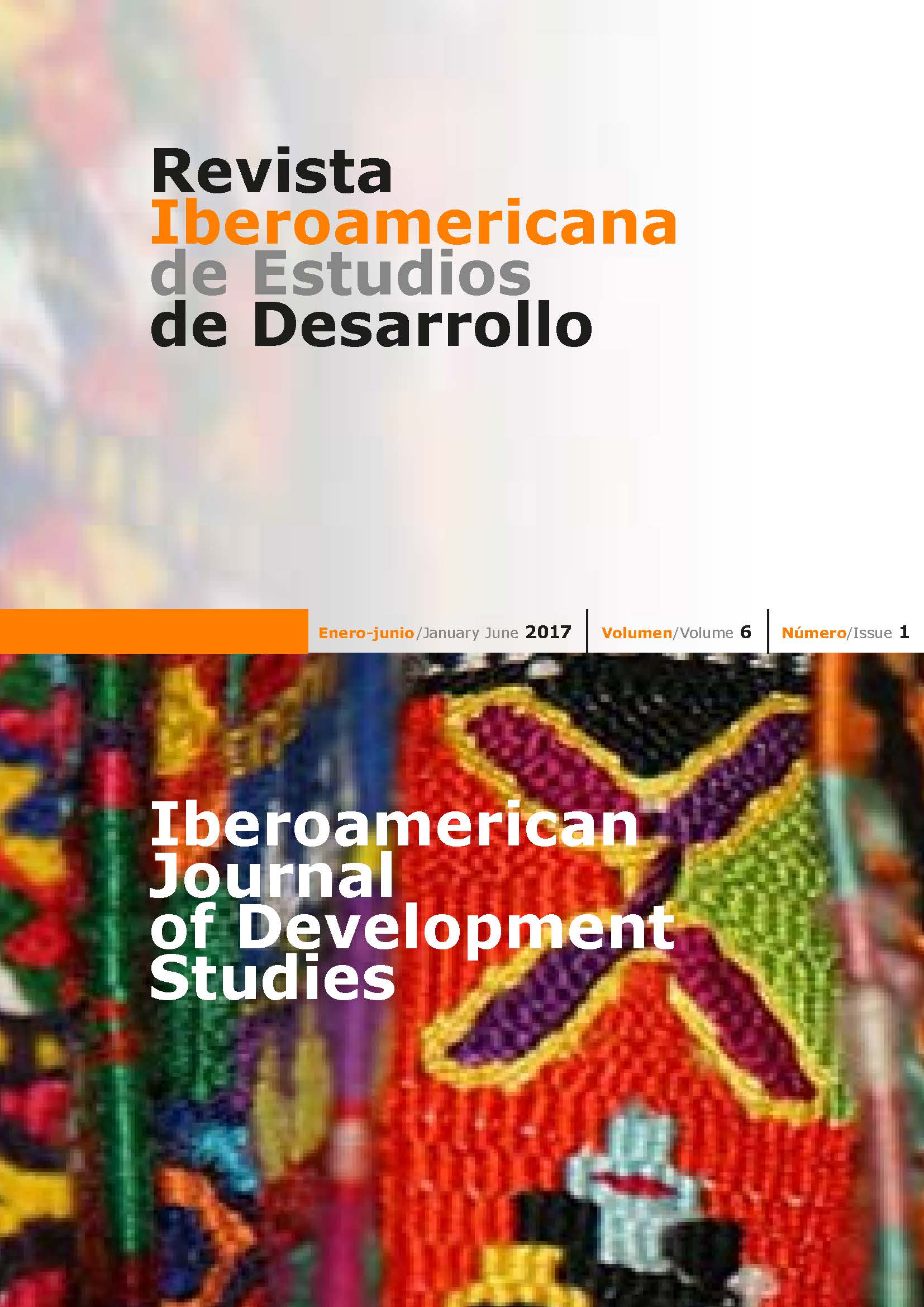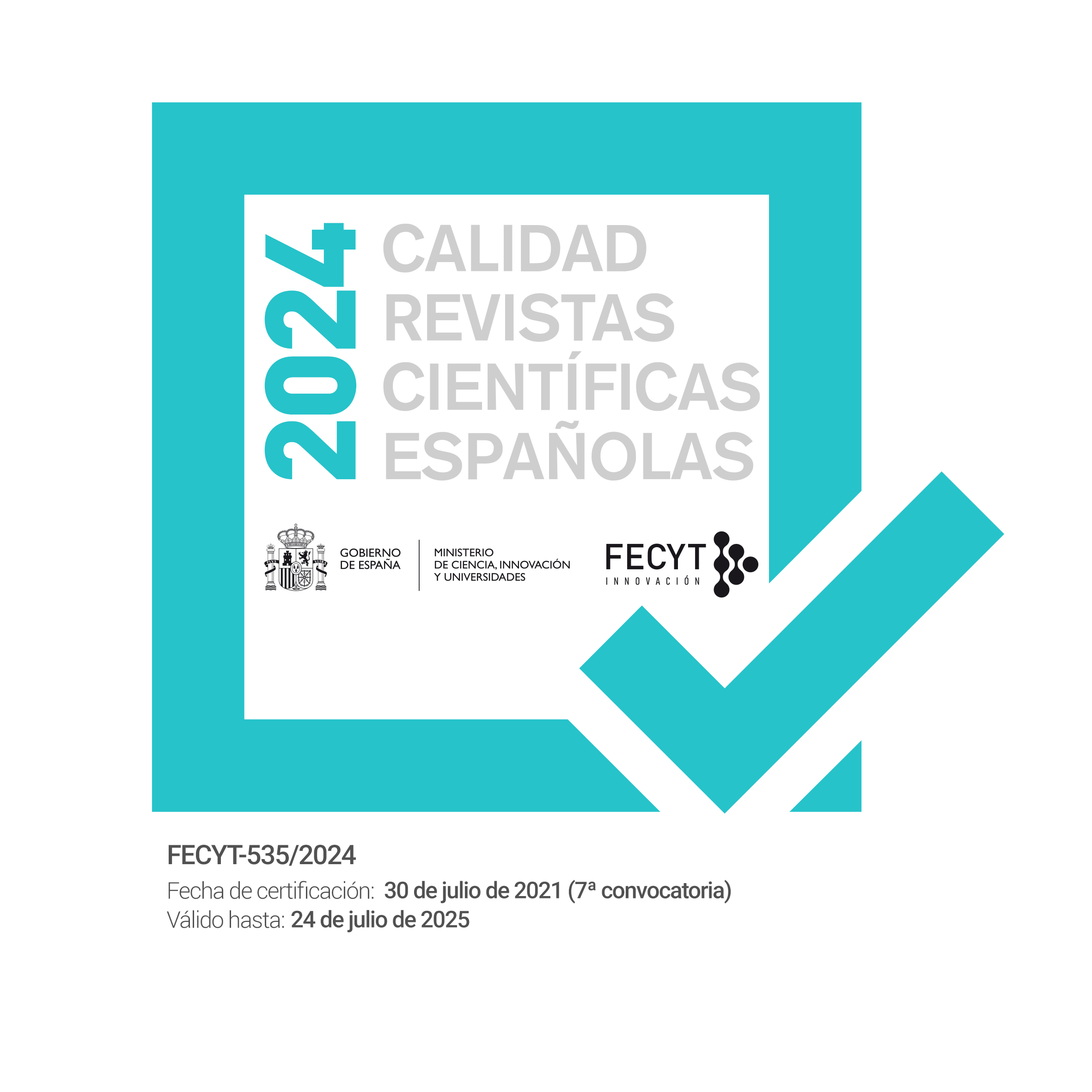Gobernanza, desarrollo y seguridad: trilemas e implicaciones para la coherencia de políticas
DOI:
https://doi.org/10.26754/ojs_ried/ijds.230Palabras clave:
gobernanza global, riesgos sistémicos, seguridad humana, coherencia de políticasResumen
En este artículo se analizan los límites de la gobernanza global y la Coherencia de Políticas para el Desarrollo (CPD), a partir de los trilemas ineludibles de la economía global y el enfoque de CPD. Se analizan algunas de las principales contradicciones, dilemas institucionales y políticos que impactan sobre el sistema de relaciones internacionales y la dinámica del desarrollo en un mundo crecientemente interdependiente y complejo. El artículo adopta un marco de análisis macroinstitucional con perspectiva histórica y multinivel, a fin de resaltar la economía política del desarrollo contemporáneo y los obstáculos para el impulso de una agenda de gobernanza global promotora del desarrollo sostenible.
Descargas
Referencias
ALONSO JA, AGUIRRE P, MADRUEÑO R, MILLÁN N (2010). Coherencia de políticas para el desarrollo en cinco donantes del CAD: lecciones para el caso español. Madrid: Fundación Carolina CeALCI.
ASHOFF G (2005). Enhancing Policy Coherence for Development: Justification, Recognition and Approaches to Achievement. Bonn: DIE.
BECKMANN JE, ADEMMER E, BELKE A, SCHWEICKERT R (2016). The Political Economy of the Impossible Trinity. European Journal of Political Economy. http://dx.doi.org/10.1016/j.ejpoleco (consultado el 10 de octubre de 2016).
BORDO M, JAMES H (2015). Capital Flows and Domestic and International Order: Trilemmas from Macroeconomics to Political Economy and International Relations. NBER Working paper 21017. Cambridge, p. 30.
BRZEZINSKI Z (1998). El gran tablero mundial. La supremacía estadounidense y sus imperativos estratégicos. Barcelona: Paidós.
BRZEZINSKI Z (2012). Strategic Vision: America and the Crisis of Global Power. Nueva York: Basic Books.
BROWN S, GRÄVINGHOL J (2016). The Securitization of Foreign Aid. Londres: Palgrave Macmillan UK. Doi 10.1007/978-1-137-56882-3.
CARBONE M (2008). Mission Impossible: The European Union and policy coherence for development. Journal of European Integration 30(3):323-342.
CHANDLER D (2007). The security-development nexus and the rise of «anti-foreign policy». Journal of International Relations and Development 10:362-386.
COLLIER P (2012). How to Spend it: The organization of public and aid effectiveness. UNU-WIDER working paper 2012/5. Helsinki: UNU-WIDER.
COOPER F, PACKARD R (1997). International Development and the Social Sciences: Essays on the History and Politics of Knowledge. Berkeley: University of California Press.
COX R (2012). Corporate Power and Globalization in US Foreign Policy. Nueva York: Routledge.
COX R, SKIDMORE-HESS D (1999). U.S. Politics and the Global Economy: Corporate Power, Conservative Shift. Colorado: Lynne Rienner Publishers.
COYLE D (2014). GDP. A Brief but Affectionate History. Nueva Jersey: Princeton UP.
DUFFIELD M (2010). The Development-Security Nexus in Historical Perspective: Governing the World of Peoples. En: Sörensen J. Challenging the Aid Paradigm. Western Currencias and Asian Alternatives [online]. http://www.palgraveconnect.com/pc/doifinder/10.1057/9780230277281 (consultado el 21 de marzo de 2016).
DUSSEL PE (2003). Ser maquila o no ser maquila, ¿es esa la pregunta? Comercio Exterior 53(4):328-336.
EICHENGREEN B (2011). Exorbitant Privilege: The Rise and Fall of the Dollar and the Future of the International Monetary System. Oxford: Oxford University Press.
EICHENGREEN B (2015). Hall of Mirrors: The Great Depression, the Great Recession, and the Uses-and Misuses-of History. Nueva York: Oxford University Press.
ENGDAHL W (2004). A Century of War. Anglo-American Oil Politics and the New World Order. Londres: Pluto Press.
FOSTER J, STOKKE O (1999). Policy Coherence in Development Co-operation. Abingdon, UK: Frank Cass Publishers.
FREDERKING B (2007). The United States and the Security Council: Collective Security Since the Cold War. Nueva York: Routledge.
GRAEBNER, N (ed.) (1986). The National Security: Its Theory and Practice, 1945-1960. Nueva York: Oxford University Press.
HAROLD J (2003). Europe Reborn. A History, 1914-2000. Malasia: Pearson Education.
HUDSON INSTITUTE (2015). The Index of Philanthropic Freedom 2015. Washington DC.
HEREDERO DE PABLOS I (2001). La Organización Mundial de Comercio frente al Acuerdo General sobre Aranceles y Comercio. Boletín ICE Económico 2691:13-20.
HJORTSHØJ K, O’ROURKE K (2014). A Tale of Two Trilemmas. En: Brennan L. Enacting Globalization. Londres: Palgrave Macmillan.
IRWIN D (1993). The GATT’s Contribution to Economic Recovery in Post-War Western Europe. International Finance Discussion Papers 442:1-35.
KALDOR N (1978). Further Essays on Applied Economics. Londres: Duckworth.
KAR D, SPANJERS J (2015). Illicit Financial Flows from Developing Countries: 2004-2013. Washington DC: Global Financial Integrity.
KAUFMANN R (2006). Morgenthau’s Unrealistic Realism. Yale Journal of International Affairs 1/2:24-38.
KEYNES JM (1930). A Treatise on Money. Londres: Macmillan.
KEYSSAR A (1996). From Discovery to Insurance: The Public and Private Spheres in the Evolution of Unemployment Policy in the United States, 1870-1935. En: Katz M y Sachsse C (eds.). The Mixed Economy of Social Welfare. Baden-Baden: Nomos.
KISSINGER H (2014). World Order. Nueva York: Penguin Press.
LATEK M (2016). Development Addressing global poverty and insecurity through better transatlantic cooperation. European Parliamentary Research Service, PE 586.6466.
LEFFLER M, PAINTER D (2005) Origins of the Cold War. An International History. Nueva York: Routledge.
LUCAS R (1990). Why Doesn’t Capital Flow from Rich to Poor Countries? American Economic Review 80(2):92-96.
MARICHAL C (2010). Nueva Historia de las Grandes Crisis Financieras. Una perspectiva global, 1873-2008. Barcelona: Debate.
MCMAHON R (2010). US national security policy from Eisenhower to Kennedy. En: Leffler MP y Westad OA (eds.). The Cambridge History of the Cold War, vol. I. Cambridge: Cambridge University Press.
METCALF H (2010). The Role of Private Assistance in International Development. International Law and Politics 42:1091-1109.
MILLÁN N (2014). Cosmopolitanización del desarrollo y coherencia de políticas: nuevos desafíos para la agenda post 2015. Investigación & Desarrollo 22(1):168-186.
MORGENTHAU H (1962). A Political Theory of Foreign Aid. The American Political Science Review 56(2):301-309.
MUNDELL R (1963). Capital Mobility and Stabilization Policy under Fixed and Flexible Exchange Rates. The Canadian Journal of Economics and Political Science 29(4):475-485.
MUNDELL R (2001). On the History of the Mundell-Fleming Model Keynote Speech. IMF Staff Papers, 4, special issue:215-227.
OBSTFELD M, TAYLOR A (1997). The Great Depression as a Watershed: International Capital Mobility over the Long Run. NBER Working Papers 5960. National Bureau of Economic Research.
OCDE (2000). Governance and Coherence. The PUMA Mandate, the Challenge and the Concept. París: OCDE.
OCDE (2003). Policy Coherence: Vital for Global Development. OECD Observer Policy Brief (julio).
OCDE (2008). Policy Coherence for Development: Lessons Learned. Policy Brief. París: OECD-ODI.
OROZCO JL (2004). El Siglo del Pragmatismo Político. Ciudad de México: Fontamara.
PADOA-SCHIOPPA T (1982). Capital Mobility: Why is the Treaty Not Implemented? En: Padoa-Schioppa T (1994). The Road to Monetary Union in Europe. Oxford: Clarendon Press, pp. 26-43.
PASTOR R (1982). Congress and the Politics of U.S. Foreign Economic Policy, 1929-1976. California: University of California Press.
PATERSON TG (1972). Foreign Aid under Wraps: The Point Four Program. The Wisconsin Magazine of History 56(2):119-126.
POLANYI K (1944). The Great Transformation. The Political and Economic Origins of Our Time. Boston: Beacon Press.
POPPER KR (1945). La sociedad abierta y sus enemigos. Madrid: Paidós.
REY H (2013). Dilemma not Trilemma: The global Financial Cycle and Monetary Policy Independence. Jackson Hole Presentation (agosto).
RODRIK D (2011). The Globalization Paradox: Democracy and the Future of the World Economy. Nueva York: WW Norton.
ROUBINI N, MIHM S (2010) Crisis Economics. A Crash Course in the Future of Finance. NuevaYork: The Penguin Press.
SANAHUJA JA, SCHÜNEMAN J (2012). El nexo seguridad-desarrollo: entre la construcción de la paz y la securitización de la ayuda. En: Sanahuja JA (coord.). Construcción de la paz, seguridad y desarrollo. Visiones, políticas y actores. Madrid: Editorial Complutense.
SCHENONI L, ESCUDÉ C (2016). Peripheral Realism Revisited. Revista Brasileira de Política Internacional 59(1):1-18.
SIANES A (2014). Una apuesta global por la Coherencia de Políticas para el Desarrollo. Sí, pero… ¿qué políticas? Revista de Economía Mundial 36:121-152.
SPEICH D (2011). The use of global abstractions: national income accounting in the period of imperial decline. Journal of Global History 6:7-28.
SPERO J, HART J (2010). The Politics of International Economic Relations. Boston: Wadsworth.
STIGLITZ J (2006). Global Public Goods and Global Finance: Does Global Governance Ensure that the Global Public Interest is Served? En: Touffut J-P. Advancing Public Goods. Cheltenham: EE.
STIGLITZ J (2013). The Price of Inequality. How Today’s Divided Society Endangers Our Future. Nueva York: Norton.
SULLIVAN R, GOULDSON A (2016). Comparing the Climate Change Actions, Targets and Performance of UK and US Retailers. Corporate Social Responsibility and Environmental Management 23(3):129-139.
TEZANOS S (2008). Cooperación para el desarrollo. Asignación geográfica de la ayuda española. Madrid: Ensayo.
THÉRIEN JP (2002). Debating Foreign Aid: Right versus Left. Third World Quarterly 23(3):449-466.
THORBECKE E (2006). The Evolution of the Development Doctrine, 1950-2005. UNU-WIDER Research Paper no. 2006/155:1-39.
UNITED NATIONS (2015). Draft outcome document of the United Nations summit for the adoption of the post-2015 development agenda. A/69/L.85. Nueva York.
UNITED NATIONS (2016). World Economic Situation and Prospects 2016. Nueva York.
VERSCHAEVE J, DELPUTTE S, ORBIE J (2016). The Rise of Policy Coherence for Development: A Multi-Causal Approach. European Journal of Development Research 28:44-61. Doi:10.1057/ejdr.2015.74.
WATSON I (2014). Foreign Aid and Emerging Powers: Asian Perspectives on Official Development. Londres: Routledge.
WORLD BANK (2016). World databank. http://data.worldbank.org (consultado en marzo de 2016).
WORLD ECONOMIC FORUM (WEF) (2012). The Financial Development Report 2012. Ginebra.
Descargas
Publicado
Número
Sección
Licencia
Derechos de autor 2017 Rogelio Madrueño-Aguilar

Esta obra está bajo una licencia internacional Creative Commons Atribución-NoComercial-SinDerivadas 4.0.






